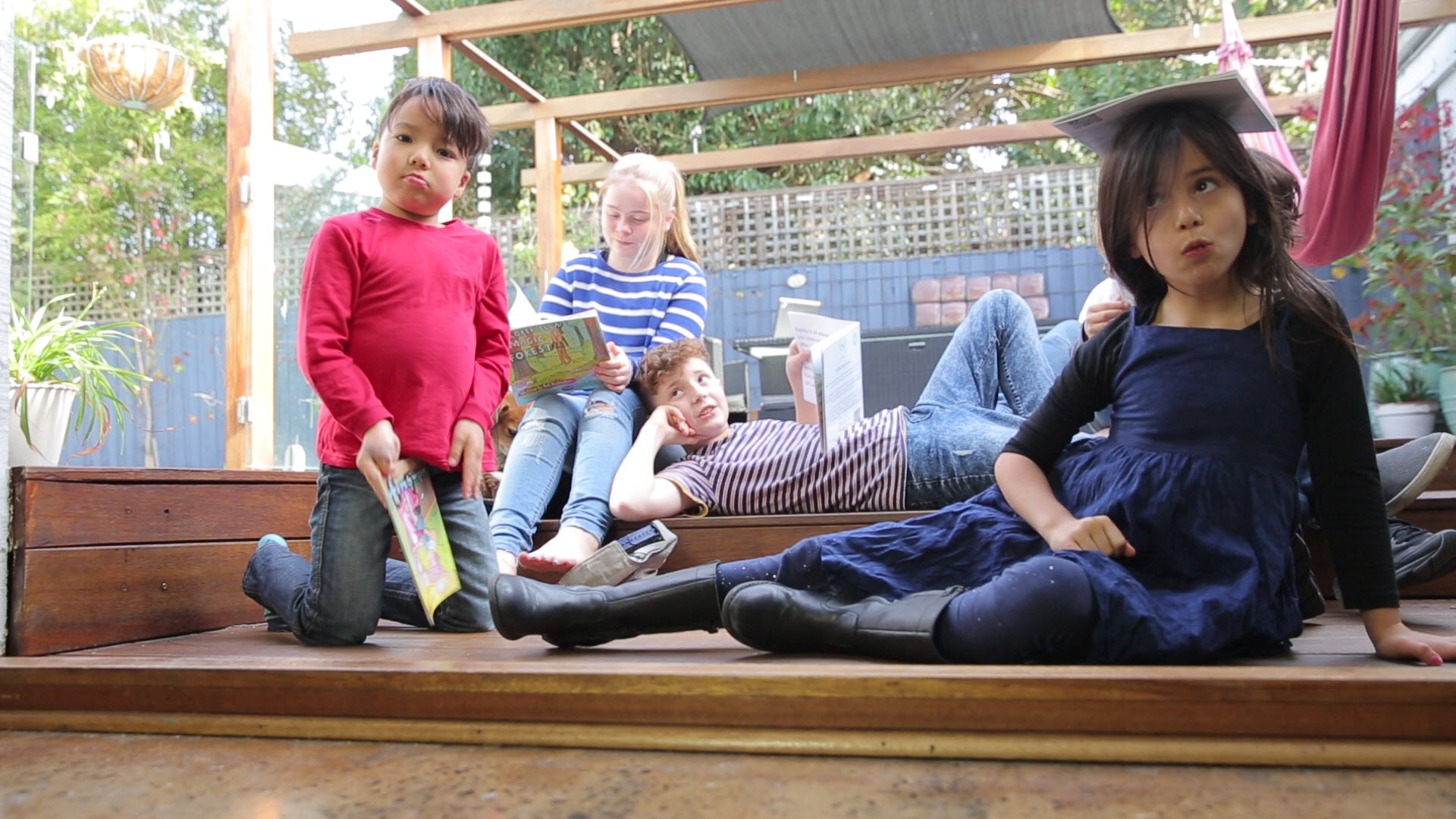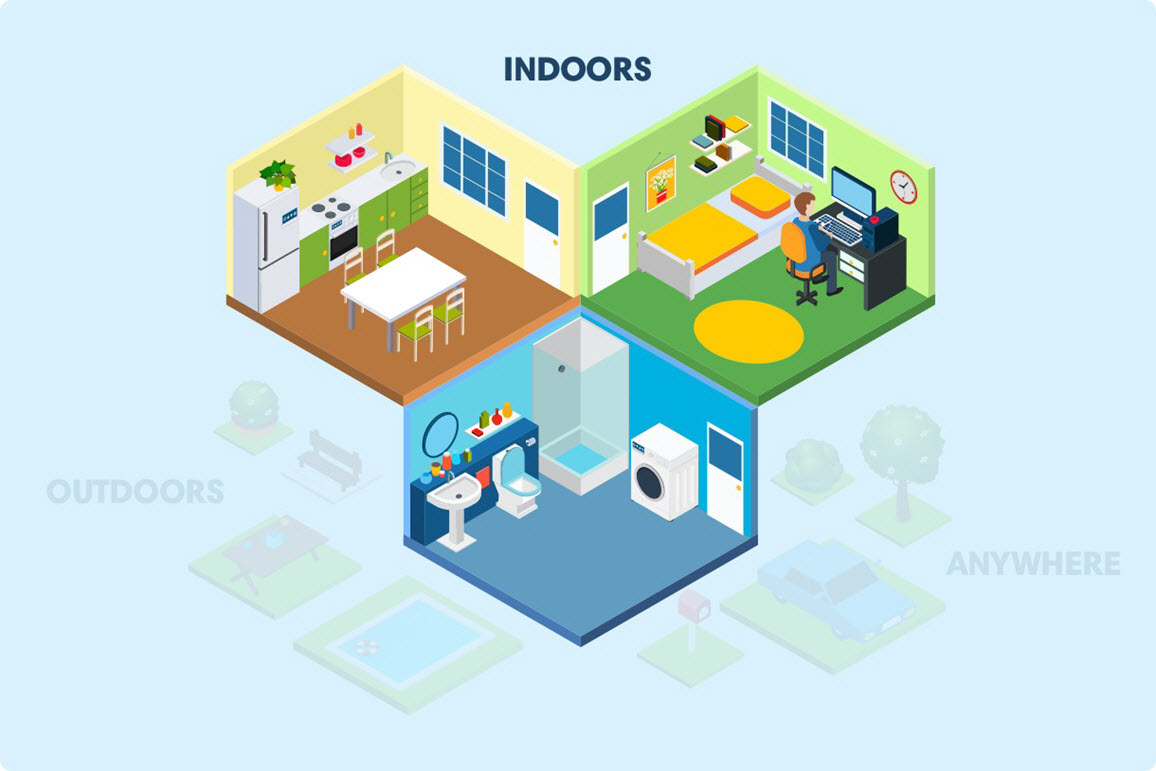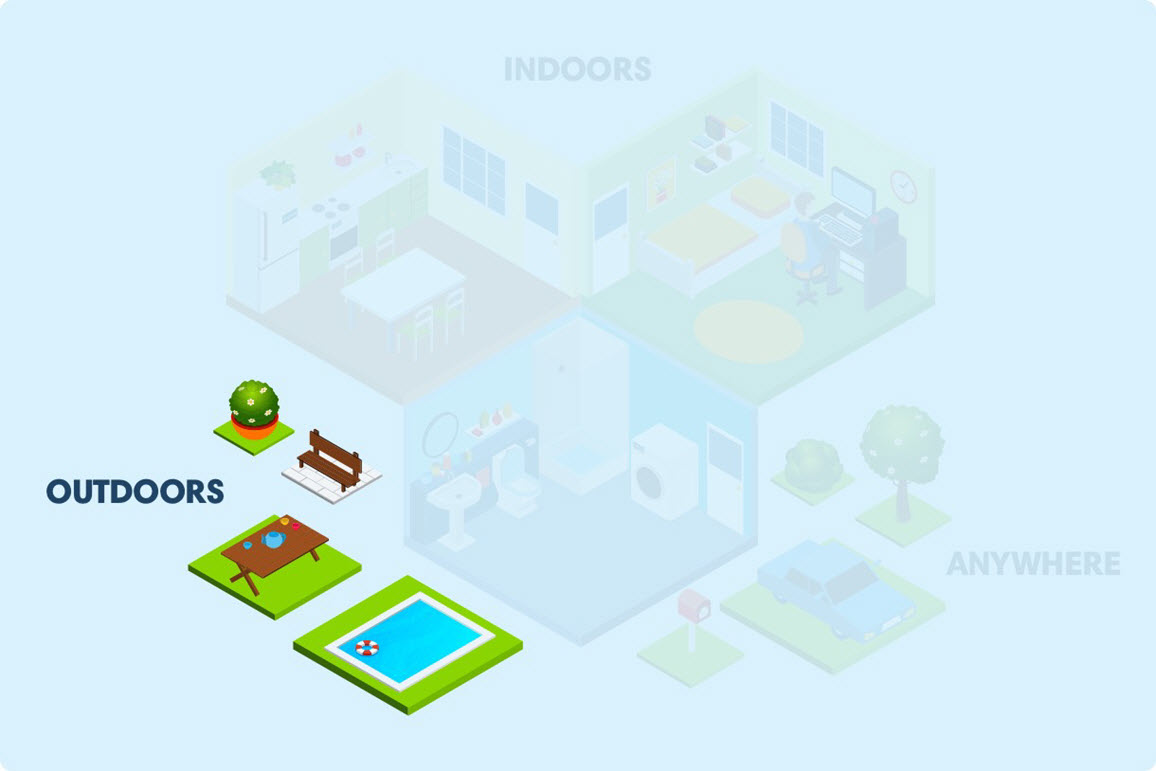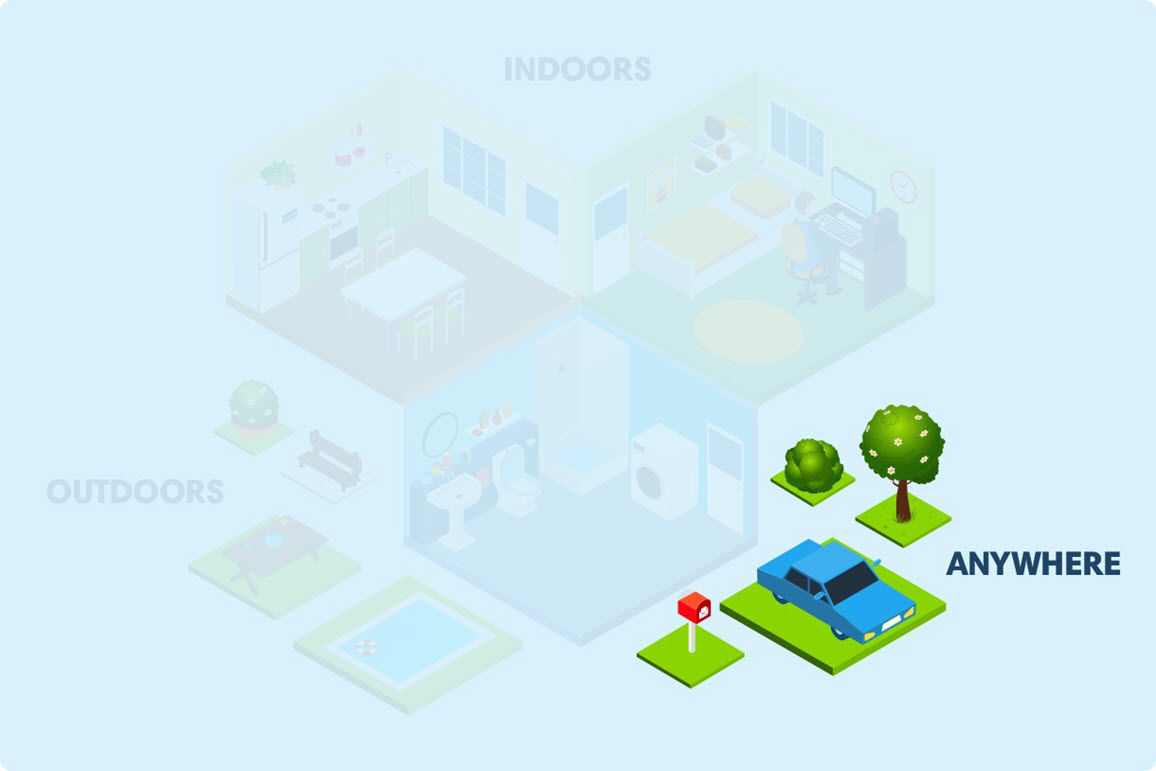

Activities for Kids That Encourage a Love of Books
12 Fun Activities for Kids That Encourage a Love of Books (Indoor Activities, Outdoor Play, and Anywhere Games)
Loving books isn’t always about sitting down and reading them. Passion for literature often comes from having a culture around these stories.
As adults, we can comfortably discuss books and have favourites that work their way into being a part of our identity.

We can reflect on the books that we enjoy, pick apart the ones that we don’t, use them as muses to create, and otherwise be inspired by characters and tales that give us motivation to do things in our lives.
For children, it can be hard to see what book can be aside from reading material. They might not yet have the specific language for talking about why they love or hate a book. They just know that they do.

One great way to help your child love literature is to show them how much more books can be through play. In this article we will discuss different types of play that can help little readers to use the words, pictures, and concepts in their books to see the world that lies beyond them.
I hope that some of these types of play spark brain-tingling moments that forge a life-long love of books for your child. We will talk about 12 different types of play across indoor activities, outdoor options, and things that can be done anywhere.


Whether you are looking for party games, fun moments in the classroom,or some activities for kids at home to keep the boredom at bay, here are some great ways to involve books in your play.

Craft
Whether the book is one that you read recently, an old favourite, or something that has to be endured for school, a craft activity can really bring the story to life. Give the reader some agency in what the craft will be centered around so that this can help with their expression about different parts of the book.

Also think about what type of craft you want to do together. Is it something that they are making as a gift? Is there a spot in their room that could do with a little decorating? Instead of just making something, help them to think about purpose.
A discussion about materials is also important. While it might be possible to get a few items from the craft store, try to encourage them to think about day-to-day items around the house that they can use for the activity, particularly things that were destined for the recycling bin.
Comic Strips
This is a good one for reluctant readers who prefer graphic novels and comic books. Pick a story that they are familiar with and get them transforming this tale into a comic strip.

If they are particularly excited about the task, you might even want to extend this task to be a couple of pages. However, this will require quite a lot of drawing so it is understandable if this might be intimidating. Start with the strip and see how they go.
For kids who like the idea but aren’t so confident in their drawing abilities, try searching some picture of the characters in the text and printing out a preset strip without words that they can add to. You can involve the reader in the selection of the pictures, and the ways in which you resize and flip them to make them suit the boxes in the comic strip.
Movies
For those kids that like a little bit of drama in their lives, consider scripting a short movie based on a book that they enjoy. There can be a lot of elements to this, and it is a great idea for a group task during the holidays.

Readers can work on a script together with your guidance. With this, try to make sure that the parts are balanced even if characters in the original get more lines than others. Then, they can even think about a few props or costumes that they might want to make together to make the story come alive.
Finally, help to record their creation while they are acting. Have a copy of their script with you so that you can help out with lines for anybody that gets nervous. When you are done, you can even consider some basic editing like giving the production a title, credits, or some intro music.
Book Hunts
This is a personal favourite of mine, and it works very well in a small party situation. It takes a fair bit of preparation time, but it is guaranteed to be a hit with readers and get them thinking a little deeper about their books.

Put together a list of clues the same as you would for a treasure hunt. Make some of these clues things about the house, and some of them relating to certain books. Some clues that the students find will lead them to the place where you have hidden a book.
Upon opening this book, there can be a riddle or cryptic clue about the content of the book. Try not to make this too difficult so that readers who have experience with the book will be likely to be able to answer from memory. When they have the right answer, you can present them with an envelope with a clue for the next location.

While there are some opportunities for sensory play inside, it is always more fun outdoors when you can be messy and crazy. This will particularly appeal to readers who can never seem to sit down or stay in one spot.

Messy Art
I really enjoy doing messy art with kids because they don’t feel like it as to be good. It is more about the feeling and exploring the medium than producing something that they can judge as not looking nice.

Having a book setting like under the sea or space can be great for this sort of art so that kids don’t feel stuck with ideas. You can look through the pictures in the book together first and brainstorm the types of things that are often seen in that setting.
There are so many options for messy art, and it will depend on what type of setting you choose. There’s blowing paint with straws, soap bubble art,finger painting, painting on glass/clear plastic, splatter painting, water balloon painting, and lots of other options. It is also a good time to talk about how you make your ‘paint’ to be sure that it is garden, kid, and pet friendly.
Experiments
Some books might spark an idea for a science experiment that you can carry out in the yard. This might be because it was the topic of a non-fiction book or simply an idea that you got while talking a character.

Things like slime and foam are always a good go to as this can help them with the sensory descriptions, but there are an enormous amount of free science experiments online to browse through. Completing the experiment will help to give readers a better sentence of the experience of characters or the content that the book regarded.
This is a great opportunity to get kids who like to race ahead to slowdown and think, because you often have to follow the steps in an exact manner. The excitement of the experiment itself is often enough to do this, and I have seen lots of high-energy kids calm down and focus so that they can achieve the results that they want.
Active Comprehension
This is another good one for little readers who wriggle and move about. After reading a book together, get them doing certain actions to ask questions. This will get them thinking while they burn up some their excess energy.

At first, try to make these questions with only two answers. These can be direct comprehension questions about whether the character was wearing this or that, or whether they did this or that. You can either make a destination in the garden the place that they have to run to to show their answer, or make the response a silly action so that they show which answer they have chosen in a fun and active way.
Once they have gotten the hang of this, you can start to ask more complex questions that might have more variety. For example, you can ask them to imitate how they think a certain character would move and talk or show you the way that characters reacted to a certain situation.
Item Search
This is a fun one, but you might have to put some rules down about fragile items. It can be gone as a group or competitively depending on how many readers you are doing the activity with.

If you are having students work as a group, assign either an individual page of a picture book or the whole text. Tell them that they have to find a certain number of things around the house or outside that they can see in the book, such as spoons, hats, pencils, or shoes.
If you want to try this as a competition, make sure that you have two different books so that they aren’t madly flipping through and causing damage to them. For a harder level, you can have a preset list of things that you found in the book. The readers will have to note down the page numbers that they appear on and also find the physical examples of those objects.

For our final category, we are thinking about things that might not necessarily be done exclusively indoors or outdoors. You might have a spare fifteen minutes while you are waiting for an appointment or a car ride where your passengers a restarting to get bored. These are some book-based options for making the time fly.

Stories in the round
This one can take a little practice before they really get into it, but it can be an excellent activity whether it is with two people or a group. You will take turns to add to parts of a story and see how long and crazy it can get.

Start by introducing the first character. I like to leave the story contribution to just once sentence so that nobody is dominating the storytelling. In your first sentence, try to include a problem for this character so that the reader responding to this doesn’t have a hard time of figuring out what to follow up with.
For those who are a little sheepish about making up new characters, try using characters that they know well from one of their books. This will help them to think about what the character might be likely to say or do as they will have experience with them.
20 Questions
For a retake on the classic car game, consider playing twenty questions about books. It is probably a good idea to have a series in mind in case the reader guesses the characters quickly. This way, they still have to narrow down which title you are thinking of.

If you are the one guessing the character or title, try not to guess too quickly. Getting the reader to think about the different situations and descriptions that you use as questions is really good practice for how they will categorise different books and character types.
You might even want to extend this to also include movies and TV shows. This can help children in the way that they think about different media, and to draw connections between different sorts of characters that they might not have thought about having any common ground.
Ispy
If you have a book handy, consider playing I spy with the objects and landscapes within the pages instead of the things that you can see in the real world. Sometimes this might offer more variation than you have available to you with the direct things around you.

Let the reader leaf through the pages and spy something. Then, they can hand the book to you and you can begin your questions. Obviously this isn’t a good option if you are driving unless you have a couple of passengers.
Try getting the reader to have variety in their initial clue. They can spy something that starts with a certain letter, spy something that is a certain colour, spy something that is in a certain setting, or even give a hint at the way in which it is used.
Poop sandwich
Last of all, we will talk about the much adored ‘poop sandwich’ approach to criticism. The idea is that you start with a piece of bread (a good comment about the thing in question), then have the poop (the thing that they didn’t enjoy about it) and then end off with another round of bread.

At first, it will be difficult to get a reader thinking about a balanced approach to criticism. It is likely to be all bread or all poop. Get them thinking about something simple that isn’t a book first. They can think about a friend or a type of food. Getting them to think about times when they weren’t so fond of a certain behaviour or way in which something was cooked is helpful for the spectrum of emotional intelligence and opinion.
Then get them to transfer this skill to talking about a book that they read recently. They will soon pick up on the habit. You can also use this when they ask your opinion about something they have done, such as a homework task. This shows them what it is like to be on the receiving end of the poop sandwich, and why a balanced approach to criticism is valuable.
Thanks for reading, and I hope that some of these types of play can help your readers to see that books are good for so much more than just reading.

